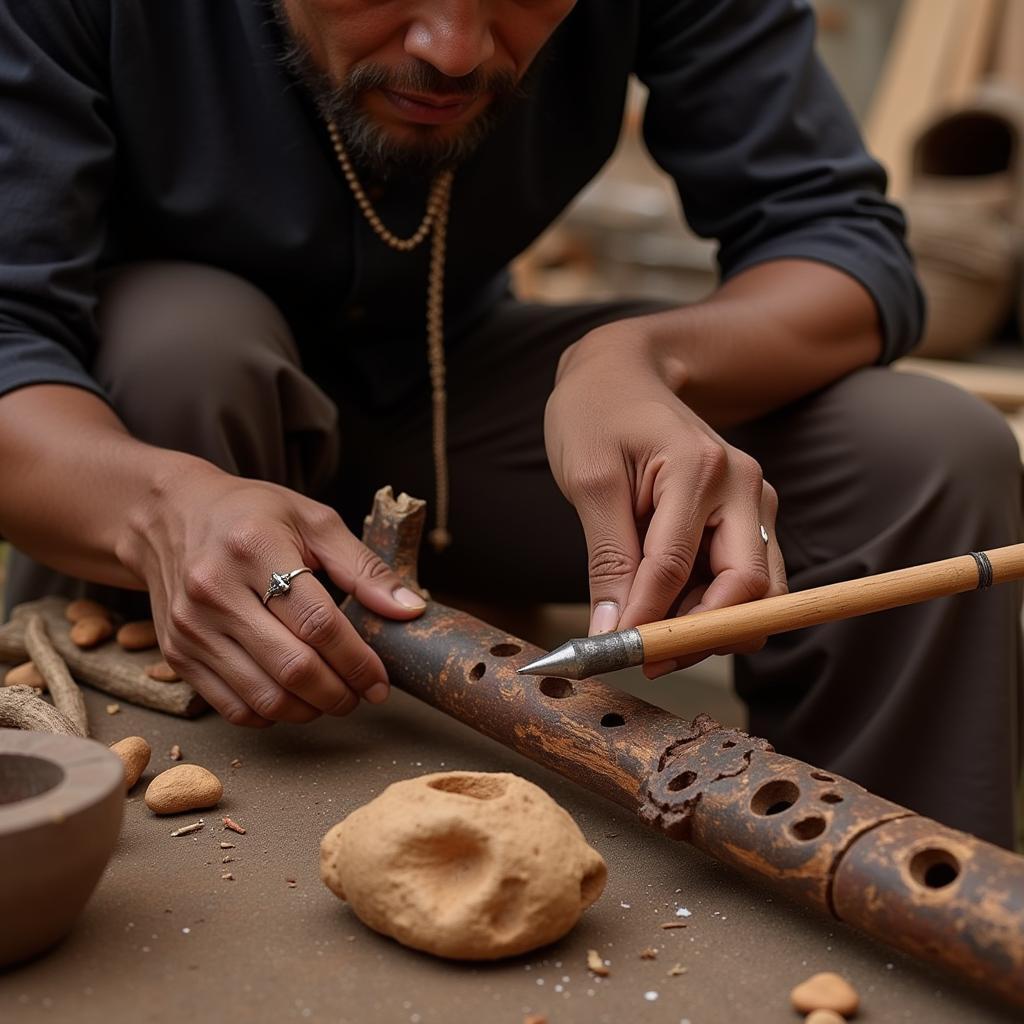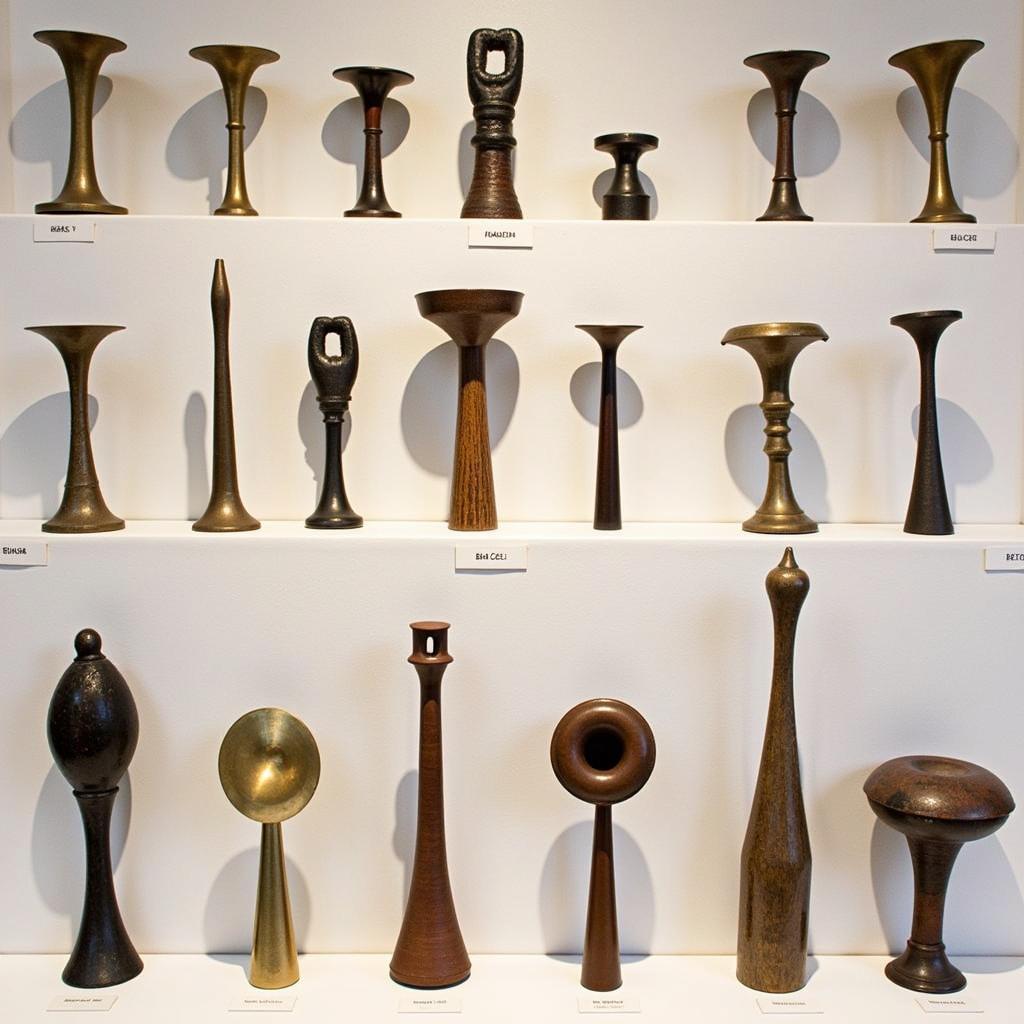Uncovering the Mystique of the African Kakoro Trumpet Trombone
The African Kakoro Trumpet Trombone, a majestic instrument steeped in tradition, echoes the vibrant cultural tapestry of the regions it graces. More than just a musical instrument, the kakoro embodies a rich history, serving as a conduit between the spiritual and earthly realms. Its powerful sound, often heard during ceremonies and rituals, resonates with the very soul of the communities it represents.
A Symphony of Craftsmanship: The Making of a Kakoro
The creation of a kakoro is a testament to the skilled artistry passed down through generations. Crafted from locally sourced materials, the process begins with the meticulous selection of wood, often from the hardy, termite-resistant “mpingo” tree.  Skilled Artisan Carving a Kakoro Trumpet Trombone
Skilled Artisan Carving a Kakoro Trumpet Trombone
The wood is then expertly shaped and hollowed out, a task demanding both precision and patience. The instrument’s distinctive trumpet-like bell is often adorned with intricate carvings, reflecting the unique artistic sensibilities of the region. These carvings, often depicting ancestral spirits or symbolic motifs, elevate the kakoro beyond its functional purpose, transforming it into a true work of art.
A Voice that Transcends Music: Ritual and Significance
The deep, resonant sound of the kakoro is deeply intertwined with the cultural and spiritual fabric of various African communities. It serves as a vital component in a wide array of ceremonies, marking significant life events and facilitating communication with the spirit world.
 Kakoro Trumpet Trombone Played in Traditional Ceremony
Kakoro Trumpet Trombone Played in Traditional Ceremony
During initiation rites, the kakoro’s powerful blasts announce the transition of young individuals into adulthood, while at funerals, its mournful tones guide spirits to the afterlife. The instrument’s presence in these pivotal moments underscores its significance as a bridge between the physical and spiritual realms.
Regional Variations: A Tapestry of Sounds and Styles
While the kakoro shares a common ancestry, regional variations abound, each with its unique characteristics and playing techniques. In Tanzania, the Wagogo people employ circular breathing, producing a continuous, trance-inducing sound. Further south, among the Sena of Mozambique, the kakoro takes on a more melodic role, accompanying songs and dances. These variations highlight the adaptability of the instrument and its capacity to evolve within diverse cultural contexts.
 Diverse Styles of Kakoro Trumpet Trombones
Diverse Styles of Kakoro Trumpet Trombones
Preserving Tradition in a Modern World
As globalization continues to shape cultural landscapes, the kakoro faces the challenge of preserving its heritage amidst changing times. However, a growing movement of musicians and cultural enthusiasts is actively working to ensure the instrument’s survival. Workshops and performances are breathing new life into the tradition, attracting younger generations to learn the art of crafting and playing the kakoro. This resurgence speaks to the enduring power of the instrument and its ability to connect generations through its timeless melodies.
The African kakoro trumpet trombone stands as a testament to the ingenuity and artistic brilliance of African cultures. Its deep-rooted significance in ritual, music, and social life highlights its enduring relevance and the importance of safeguarding its legacy for generations to come.


